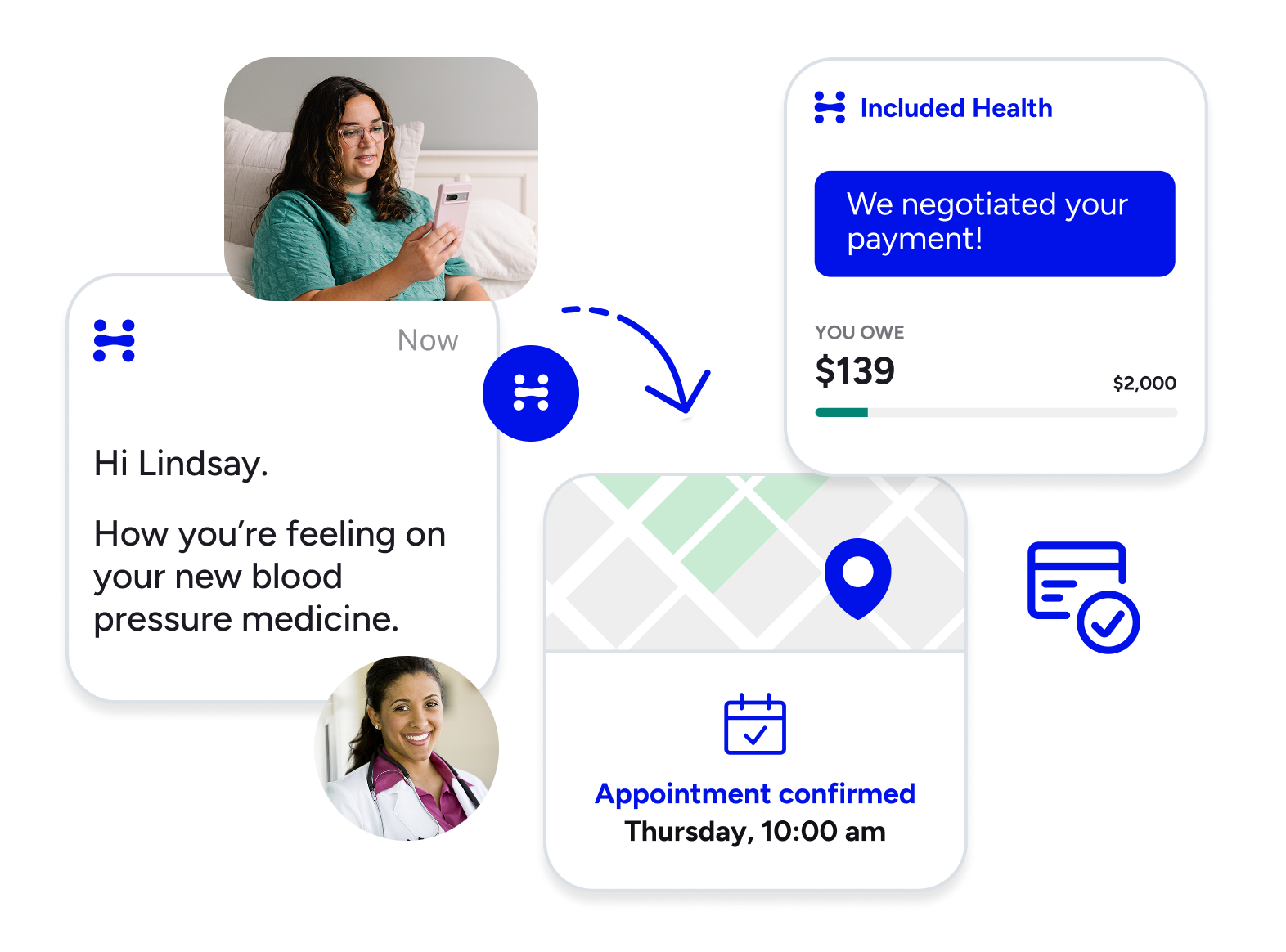
The right healthcare model can improve quality and results while reducing healthcare costs
A decade of breakthroughs in medicine, digital health, and AI has reshaped healthcare, yet one fundamental challenge remains: healthcare costs continue to rise while access to quality care shrinks.


Personalization, integration, and experience deliver value
Improving the healthcare experience is a win-win for people and purchasers. When individuals and families receive holistic care and support, they're healthier and more engaged, leading to lower total cost of care and better healthcare value for everyone.
Included Health reaches nearly 80% of households annually and can cut healthcare trend by 3% or more, saving clients millions.
Successful value-based partnership models are based on alignment and accountability
Aligned incentives ensure partners drive toward long-term cost savings and health outcomes
Integrated core services—access, answers, and advocacy—improve efficiency and clinical impact
Data sharing, using AI and human intelligence in tandem to provide personalized care
Long-term vision that provides necessary short-term assurance

Lower healthcare costs with value-based partnerships
Understand the power of value-based partnerships in achieving significant healthcare cost reductions. This essential guide provides benefits leaders with practical steps and considerations for implementing successful strategies.
What is value-based care?
Value-based care is an umbrella term for payment and care delivery models that incentivize quality over quantity. Healthcare purchasers pay providers based on quality and effectiveness of care, not the volume of services delivered.
The goal: better outcomes, lower costs, and a better healthcare experience.
To control costs without cutting corners on workers' health, private employers and public-sector organizations need value-based partnerships aimed at lowering the total cost of care. Leaders like Walmart and the California Public Employees' Retirement System (CalPERS) are proving what's possible—and now, organizations of all sizes can follow suit.
Ready to get more from your healthcare spend? We’re here.
Get in touch with our team to see how Included Health can bring your organization and workforce more value.
Healthcare solutions built for organizations and people
Included Health’s comprehensive healthcare services provide access, answers, and advocacy to our members—with accountability to improve people’s health while removing unnecessary costs.



